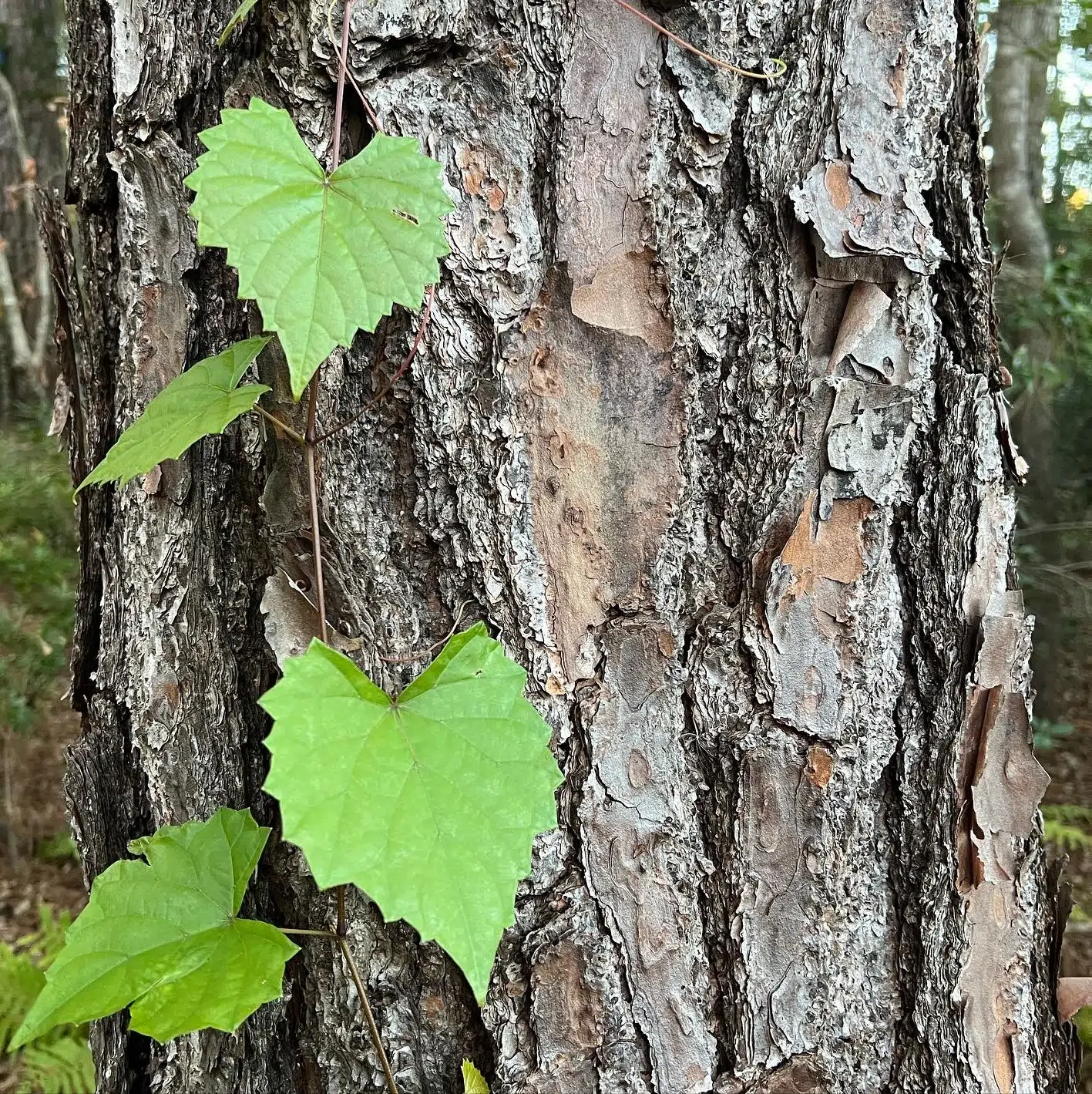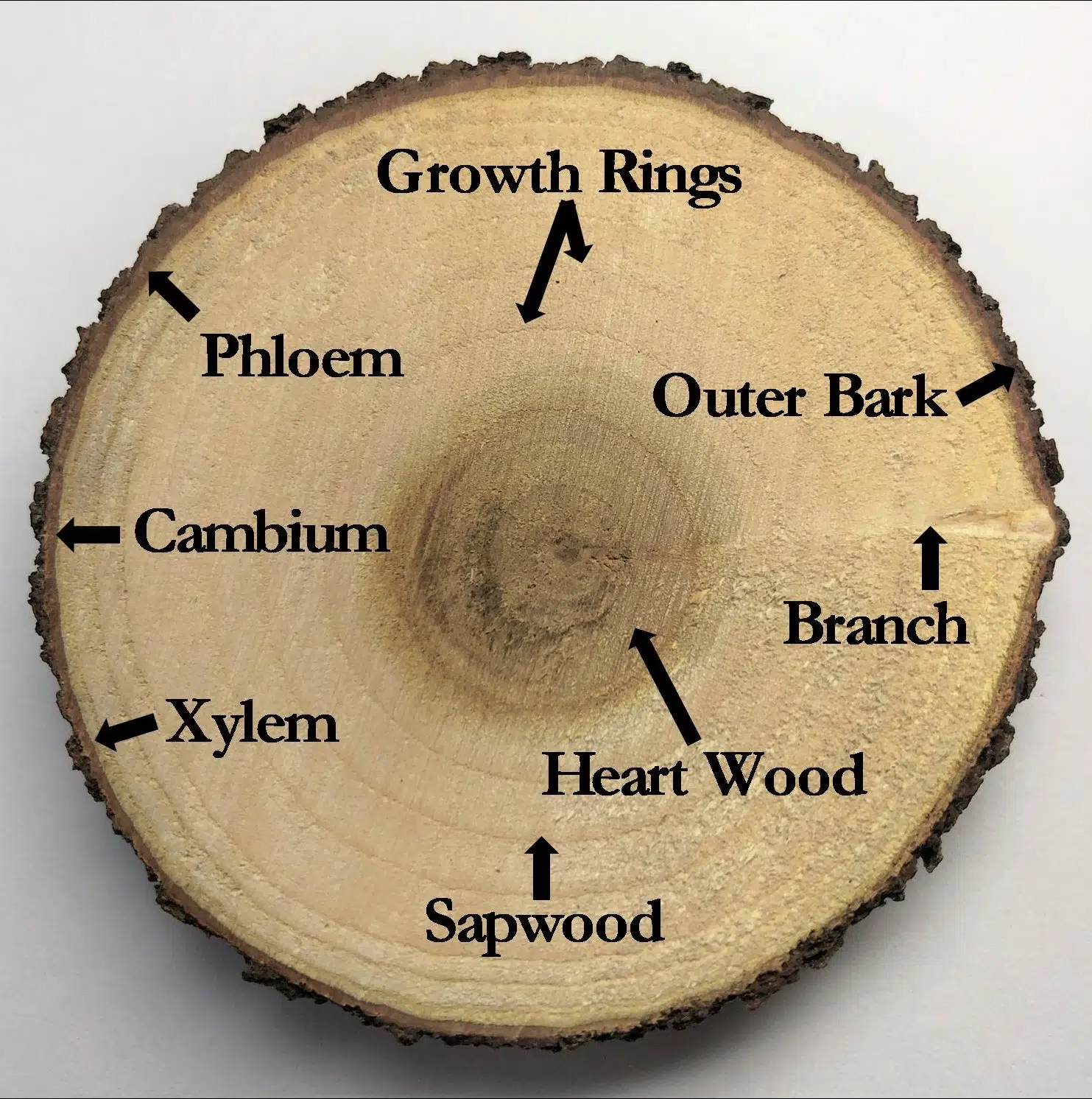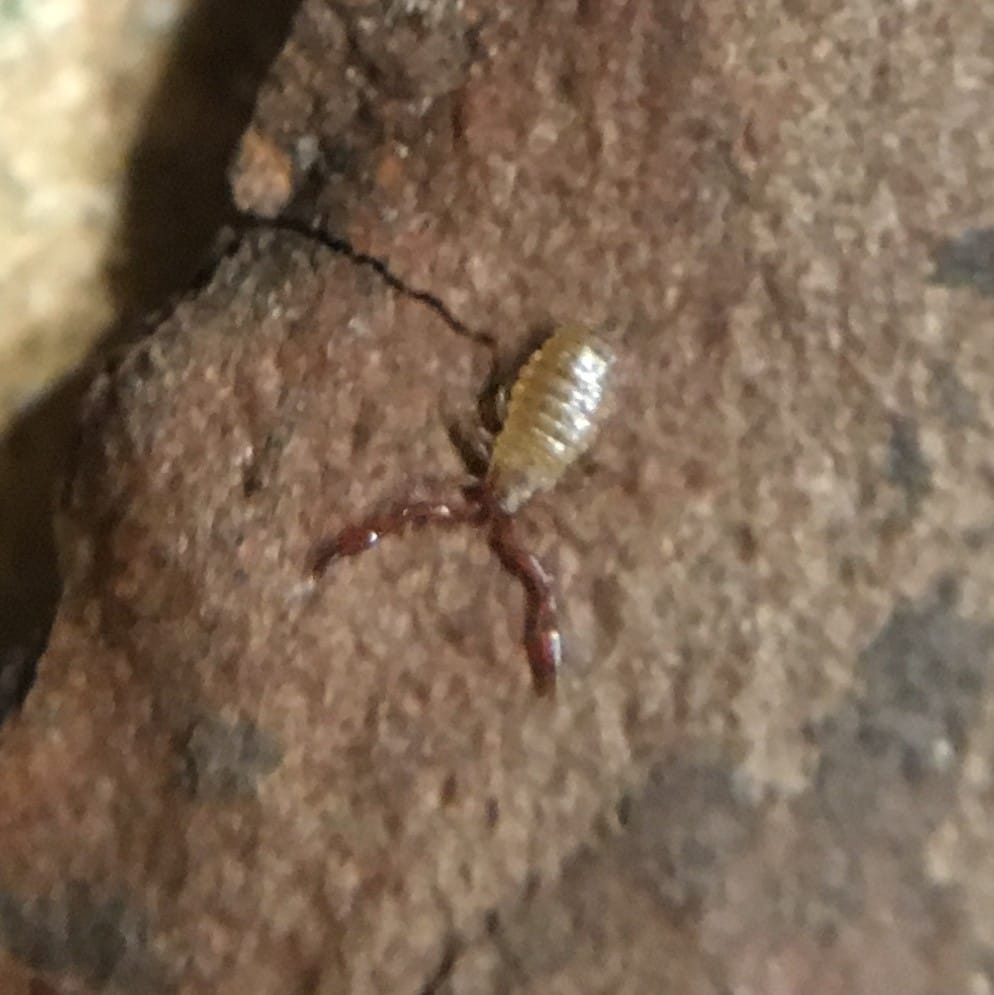Everyone knows that the bark of trees is the plant’s skin, protecting the tree’s living tissues beneath. What lies beneath bark is also a story of how trees grow and have evolved to become the giants among plants. But bark is also habitat for many organisms that are found nowhere else.
Bark is simply the outer dead tissue of woody plants that forms from the main living layer of plants – the cambium (from Latin meaning exchange). This layer lies just below the bark and between it and the woody tissues that form the bulk of stems and trunks of trees. From this position, the thin cambium layer lays down new tissues in both horizontal and vertical directions – allowing the plant to grown in width and height. A cross section of a tree trunks serves to illustrate the arrangement.
The inner tissue is call xylem (from ancient Greek meaning wood). The newest thin layer of xylem next to the cambium serves to transport water and nutrients up from the roots to the leaves that produce sugars that feed plant growth. This tissue also accumulates sap in the older inner layers as the plant grows in width. Sap eventually solidifies into wood – giving the plant the strength to grow larger (in width and height) than non-woody plants like grasses.
The outer tissue is called phloem (from ancient Greek meaning bark). The newest thin layer of phloem next to the cambium serves to transport sugars generated in the leaves to other parts of the plant, including the roots. As the plant grows in width, the older layers of phloem die and become the bark that we see. The patterns of bark, that can be distinctive for many trees, represents the outward movement of dead phloem from a younger and smaller diameter trunk. If you could fit the outer most pieces together, you could recreate the circumference of the younger tree.
The outer surface, furrows, and peeling layers of bark also provide surfaces and spaces for a wide range of organisms that attach to the surface or “live” in these spaces. Lichens are the most common and diverse group of organisms found on the surface of bark. Epiphytes like Resurrection Fern, orchids and Mistletoe grow attached to bark, as do the many species of vines that grow on trees.
As for the animal world, numerous small insects, spiders, Pseudoscorpions and other groups of invertebrates make their homes between layers of loose bark, representing a diverse community of bark predators and prey. Many small woodland birds and lizards forage for these organisms during the day. At night, the surface of tree trunks become highways for daddy longlegs, spiders and centipedes seeking the same prey, and for foraging millipedes feeding on fungi and bacteria. Not be left out are species of bats that roost under the larger loose layers of bark of pines and other trees with peeling bark.
So, beyond protecting the living tissue beneath it, bark is also a home for many creatures that add diversity to our world, even if we cannot see them.
Hope to see you in our great outdoors!






